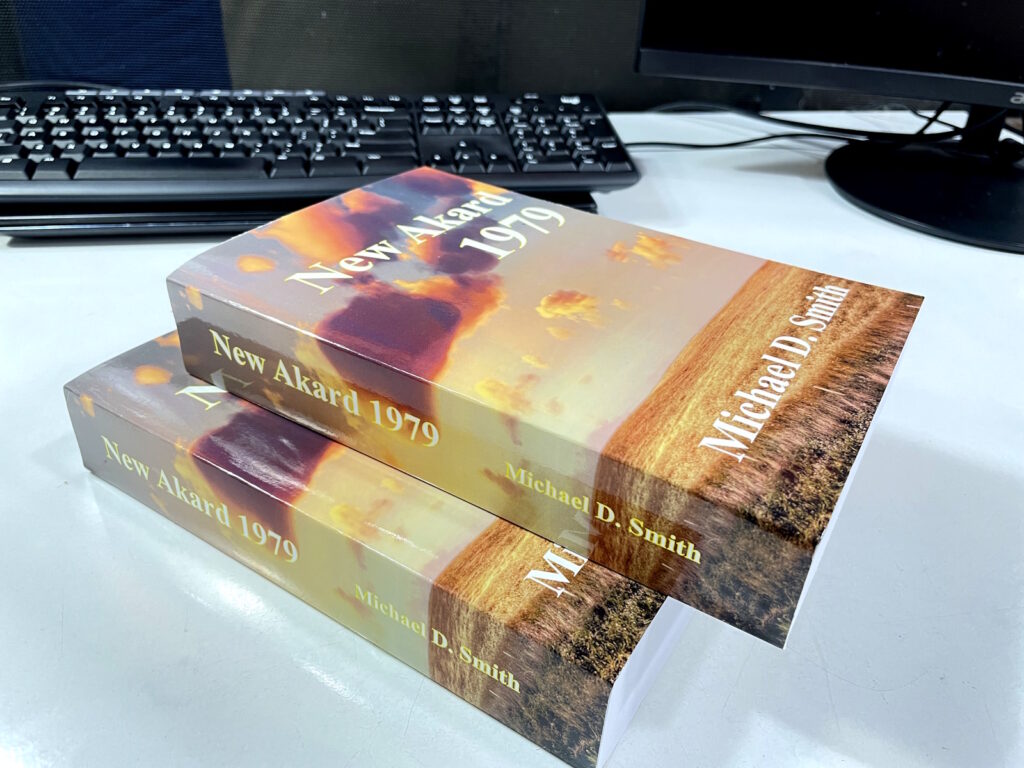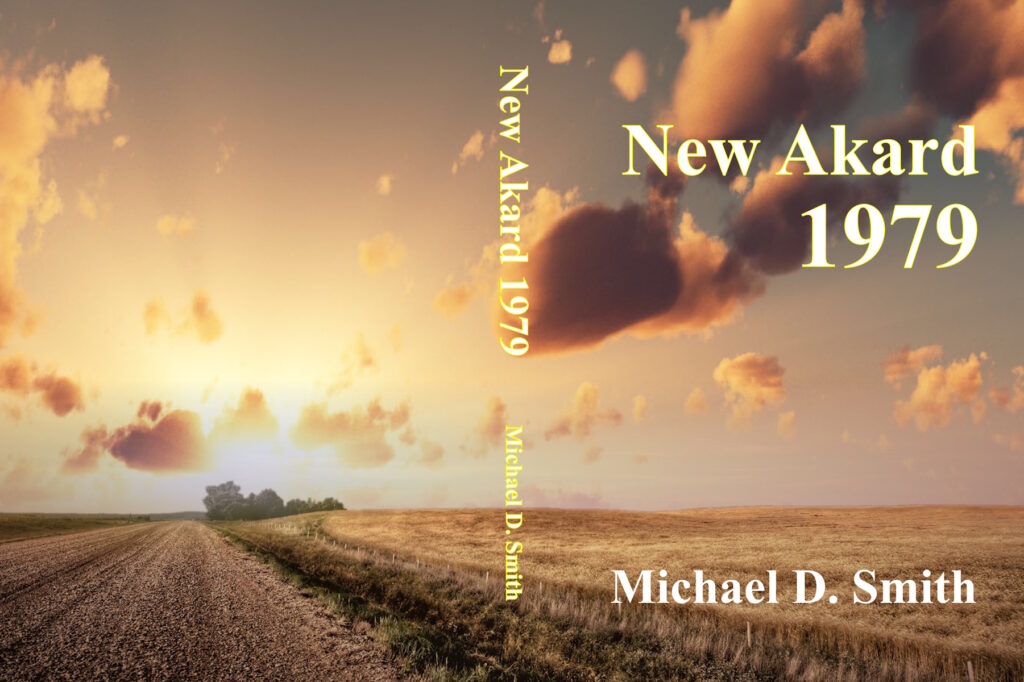Why New Akard 1979?
 Operating from their murky ’70s counterculture commune in rural Texas north of Austin, Akard and his three drug-addled buddies forge the greatest rock album of all time despite the homicidal insanity of genius bassist Jim Piston and his penchant for smuggling revolvers into recording sessions. Somewhere along the line the Texas businessmen riding the group’s wave find themselves covering up a sordid murder, and Exponentialist philosopher Naomi Kugel posits that “everything is going to get exponentially worse before it gets any better.”
Operating from their murky ’70s counterculture commune in rural Texas north of Austin, Akard and his three drug-addled buddies forge the greatest rock album of all time despite the homicidal insanity of genius bassist Jim Piston and his penchant for smuggling revolvers into recording sessions. Somewhere along the line the Texas businessmen riding the group’s wave find themselves covering up a sordid murder, and Exponentialist philosopher Naomi Kugel posits that “everything is going to get exponentially worse before it gets any better.”
I’m again pleased to announce that I’ve produced yet another paperback, New Akard 1979, that no one can buy–just like Akard Draft One Art Objects and The Sortmind Draft One Project. I didn’t fully realize how happy New Akard 1979 made me until I received two copies of the paperback today.
Why Would Anyone Resurrect an Ancient, Abandoned Third Draft?
 New Akard 1979 is the October 1984 third draft of the long and difficult Akard Drearstone project, which went through twelve drafts and two major reboots before final publication in 2017.
New Akard 1979 is the October 1984 third draft of the long and difficult Akard Drearstone project, which went through twelve drafts and two major reboots before final publication in 2017.
Why did I spend a month revamping the ancient, abandoned third draft of a novel, and why am I bothering to blog about it now?
I intended from the beginning to eventually publish the novel; this third version, crafted with publishable product in mind, represents the original idea of the book–at the exact time in 1984 when I realized I’d fully outgrown this work and dropped it.
Now I want to see where I assisted the novel’s vision under that publishing mandate, and where publication concerns diminished it. What worked and what didn’t?
So in May and June I scanned and edited the 861 typewritten pages of New Akard 1979 with the goal of being faithful to the October 1984 version. I only made minor changes for clarity’s sake, such as standardizing title formats and correcting spelling. But there’s no overall style sheet; usage may employ 24 or twenty-four; AM, a.m., or A.M.; traveling or travelling. I left odd or inconsistent capitalization and almost all comma-separated run-on sentences, though I occasionally interrupted one of these with a period for ease of comprehension. The non-published paperback from lulu.com runs 308,752 words in 699 pages, and it came out looking very nice.
The Path to NA 79
 The twenty-three-year-old’s sprawling, weird, experimental first draft of Akard Drearstone consisted of 1,587 pages in thirty-one chapters, an astonishing learning experience despite its many flaws. I knew as I wrote it that it badly needed major revision. The goal of Draft 2, 1978-1981, was to eventually produce a final typed manuscript and start publisher queries. Many of its thirty chapters went through third, fourth, or fifth drafts, and I experimented with all sorts of tricks and techniques, such as reformatting narrative into articles and transcripts, trying to make a long novel more palatable.
The twenty-three-year-old’s sprawling, weird, experimental first draft of Akard Drearstone consisted of 1,587 pages in thirty-one chapters, an astonishing learning experience despite its many flaws. I knew as I wrote it that it badly needed major revision. The goal of Draft 2, 1978-1981, was to eventually produce a final typed manuscript and start publisher queries. Many of its thirty chapters went through third, fourth, or fifth drafts, and I experimented with all sorts of tricks and techniques, such as reformatting narrative into articles and transcripts, trying to make a long novel more palatable.
Before beginning the manuscript project, Fall 1980 to September 1981, I cut the first three slow introduction chapters and an unnecessary flashback chapter. Twenty-six remaining chapters, 1,128 typewritten pages, became the basis for my typed manuscript. I then typed 377 pages of MS. through September 1981, but at that point, dreading the continued typing duties and realizing I needed new forms of expression, I put the project on indefinite hold.
Three years later in October 1984 I bade a final farewell to the novel–so I thought at the time‑‑by cutting six additional chapters and making a photocopy of the novel for off-site storage. Now I called the novel New Akard 1979 because the events were set in 1979–another nod to consigning the book to my writer past. It was good to realize that the manuscript’s 861 pages were a refreshing 54% of Draft 1’s length, but what I basically felt was relief at having finally consigned the book to the desk drawer.
Old Publishing Concerns and Writer Ambition
 Of course New Akard 1979 has major flaws. The first two long chapters are especially disappointing. They seem like safe, dull writing in service of “trying to get published.” In fact, most of the first chapters have a fearful editor-pleasin’ flavor which instead broadcasts a tone of insecurity about the vast topics the book purports to cover. Yet later on outrageous ideas, humor, and quirks start flowing, the chapters get stranger, the characters deepen, and the novel moves down a much more complex and intriguing path.
Of course New Akard 1979 has major flaws. The first two long chapters are especially disappointing. They seem like safe, dull writing in service of “trying to get published.” In fact, most of the first chapters have a fearful editor-pleasin’ flavor which instead broadcasts a tone of insecurity about the vast topics the book purports to cover. Yet later on outrageous ideas, humor, and quirks start flowing, the chapters get stranger, the characters deepen, and the novel moves down a much more complex and intriguing path.
Part of the reason for the initial dullness may be because, while typing from the last completed drafts, I was still doing some amount of rewriting during the manuscript phase, tidying passages and trying to make them worthier of editor respect.
It certainly wasn’t as if my whole urge to revise was to knuckle down to what I thought publishers might find acceptable. The entire novel experience from 1975 to 1984 was complicated, an exhausting long haul of good and bad writing, revisions, surprises, unfolding energies, and many experiments to correct and consolidate.
It may be that I got discouraged because of that play-it-safe mode; I think that if I’d had word processing at the time, I might’ve rearranged the novel again in 1981 and essentially started over. A typed manuscript is just a notch above stone-carving, after all, and the 377 pages of typed manuscript were a formidable obstacle to any concept of reboot.
I know that my endless involvement with Akard and its published 2017 edition have answered its karmic role in my life, but there’s always been that feeling of regret at not seeing the 1981 typing through. It’s informative now to re-experience how ambivalent I felt about the concept of publishing back then–being both ambitious about a writing career and scared about how to pursue it.
I’d completely forgotten some chapters that never formed part of the final 2017 Akard Drearstone. A couple are really mindblowing, with excellent character interaction, and it was wonderful to bring these energies into the light.
Overall, NA 79 is not a bad attempt. I even think my goal of it becoming a publishable novel could have been realized–IF I’d found an editor who could’ve correctly seen that the first chapters are rather dull and convinced me to cut them and then start with the same concert bust where the final Akard does begin.
AI Makes Me Laugh
Okay, I’m shocked. I uploaded the PDF chapter scans into Google Drive, then used Google Docs to OCR them. Then, out of curiosity, I used the “Summarize this file” feature for each of them. The result was twenty-five single-spaced pages of mechanized zaniness and bizarre conjecture. The one for the first half of Chapter 1 says:
The document “01-FourHorsemen-A” is the first chapter of a story titled “Akard Drearstone.” It involves characters named Jim Piston, Akard Drearstone, Richard Autograph, and Crystal Synapse.
Here’s a summary of the chapter’s content:
- It takes place at a farmhouse where people are gathering for an evening. There’s a history of “dope oblivion parties” at this farm on Fridays and Saturdays.
- Akard can identify cars by the sound of their engines. People arrive, and Akard identifies some of them by their vehicles.
- Richard and Crystal are expected to bring a significant amount of money. They have a history of drug deals.
- The characters smoke from a shared pipe that belongs to Richard. There’s nostalgia associated with it.
- The farmhouse is described in detail, including its layout and surrounding structures like a barn and a shack.
- People at the farm engage in activities like throwing cinder blocks at wrecked cars.
- Richard and Crystal bring in $1500. The group discusses past and future drug deals.
- The group members discuss their financial situation, past musical projects (like the “Stompin Fuckholes”), and plans for future music.
- The ownership of the farm is explained. Akard owns 50%, Pete Sponge 25%, and Jim 25%. Richard, Crystal, and Bill Punish live there but own nothing.
- The group plans to play music later in the evening, possibly after taking acid.
- They move around the property, including the barn, and have conversations about their music and other philosophical topics.
- The chapter ends with preparations for a night of music and drug use, with several characters involved in various activities and conversations.
Is any of this true? Cogent? Valuable?
The Good, the Bad, and the Mediocre
 I’ve always thought that the 1,587-page rough draft of Akard Drearstone consisted of one good novel, one bad novel, and three mediocre novels, and that by the time I got to the published 2017 Akard, I had the good, satisfying novel at last, truly about 20% of the original draft’s length.
I’ve always thought that the 1,587-page rough draft of Akard Drearstone consisted of one good novel, one bad novel, and three mediocre novels, and that by the time I got to the published 2017 Akard, I had the good, satisfying novel at last, truly about 20% of the original draft’s length.
So, back-of-the-envelope calculation, I would say that New Akard 1979 represents the good novel, though still interlaced with two of the mediocre ones. Still, it was quite the educational experience, and I’m glad to remember that the bad novel got vanquished so early. It’s been fun to take a refresher course about this entire process. I now have a polished version of very old, speculative, and unfinished energies that I feel also speak to my future writing.
copyright 2025 by Michael D. Smith

Comments
Why New Akard 1979? — No Comments
HTML tags allowed in your comment: <a href="" title=""> <abbr title=""> <acronym title=""> <b> <blockquote cite=""> <cite> <code> <del datetime=""> <em> <i> <q cite=""> <s> <strike> <strong>